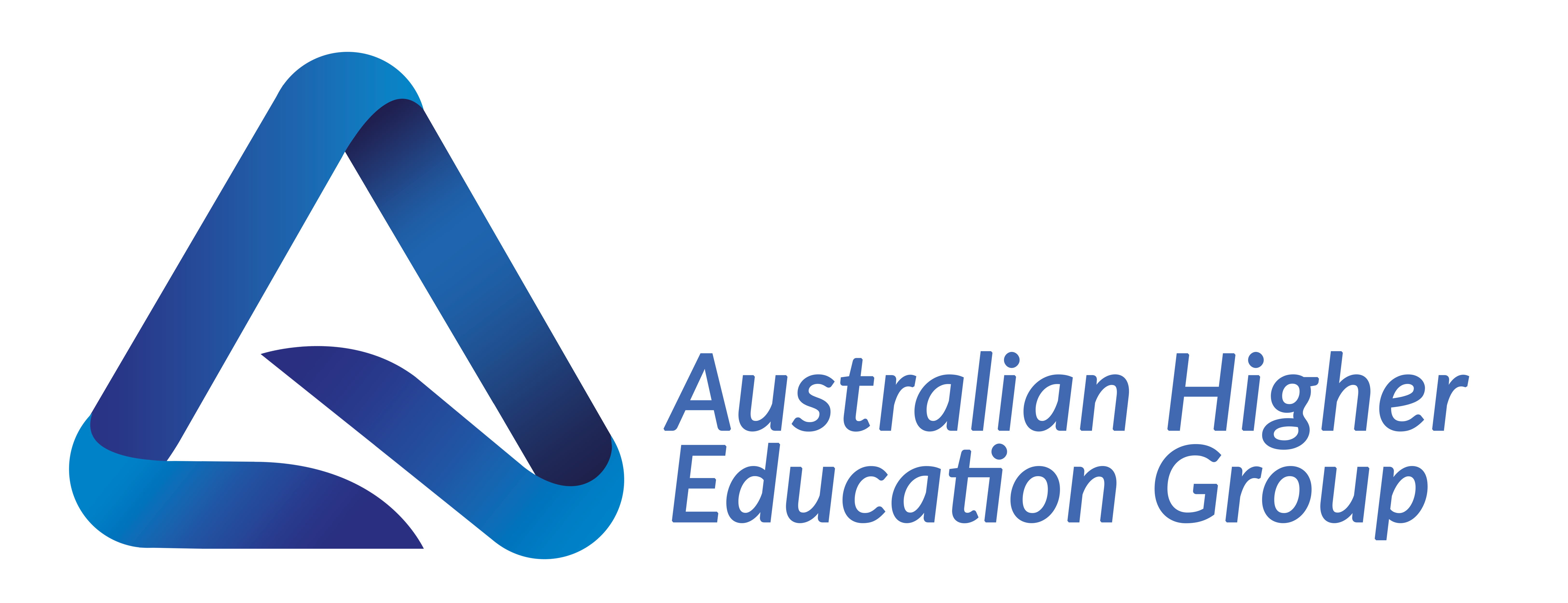THE INVISIBLE EPIDEMIC
Across Australia’s lecture halls, online classrooms, and university corridors, a silent crisis is reshaping the foundations of academic integrity. Contract cheating, the act of students outsourcing their assignments, essays, or even entire theses to third parties, has evolved into one of the most sophisticated and damaging forms of academic misconduct in higher education. The digital transformation of learning, the globalisation of assessment services, and the rapid advancement of artificial intelligence have all converged to create an environment where cheating is not only easier but also increasingly difficult to detect.
Once dismissed as isolated incidents, contract cheating now represents a widespread threat to educational credibility, research integrity, and public trust in qualifications. The Tertiary Education Quality and Standards Agency (TEQSA) reported that as early as 2019, over 2,000 websites were offering paid academic work to Australian students, many operating internationally beyond the reach of domestic law. By 2023, this number had multiplied, fuelled by social media marketing, encrypted messaging apps, and AI-powered writing platforms. The scale of the problem is alarming; a 2022 survey by the Independent Higher Education Australia (IHEA) found that up to 8 per cent of students admitted to engaging in some form of outsourcing. Extrapolated across Australia’s million-strong higher education population, this equates to tens of thousands of compromised assessments every semester.
OUTSOURCING INTELLECTUAL LABOUR
Contract cheating is not confined to purchasing essays. It manifests in myriad forms: ghost-writing, paid online tutoring that crosses ethical lines, collusion disguised as collaboration, unauthorised use of generative AI, and fraudulent identity use in online exams. In essence, the phenomenon represents the outsourcing of intellectual labour, a fundamental breach of the learning process.
The typical pathways into contract cheating are disturbingly simple. Search engines, social platforms, and direct messaging services provide instant access to thousands of “academic assistance” providers. Many operate as polished, professional-looking websites offering 24-hour turnaround times, guaranteed grades, and “confidential services.” Some even mimic legitimate tutoring platforms. Beneath their surface lies an ecosystem of freelance writers, offshore companies, and algorithmic content generators.
One recent Australian study by the University of Western Australia (2023) analysed over 6,000 online advertisements targeting students during peak assessment periods. The research found a deliberate alignment between cheating service promotions and university academic calendars, suggesting strategic targeting of vulnerable students under pressure. Contract cheating companies deploy aggressive marketing tactics: limited-time discounts, testimonials, and “loyalty programs.” Some even provide referral bonuses to students, effectively turning peers into recruiters.
The moral hazard deepens when students justify such behaviour as “academic survival.” Many cite excessive workloads, unclear expectations, or language barriers. For international students, the issue intersects with linguistic and cultural adaptation challenges. For domestic students, economic pressures and part-time work commitments often contribute. What unites these rationalisations is a sense of detachment, a belief that cheating is a victimless act. Yet, the victims are many: honest students whose efforts are devalued, educators whose assessments lose credibility, and institutions whose reputations erode.
THE DIGITAL DOUBLE-EDGE
Technology, the enabler of modern education, has simultaneously become contract cheating’s most potent weapon. The rise of generative AI, capable of producing sophisticated essays indistinguishable from human writing, has blurred the line between legitimate academic assistance and dishonest outsourcing. Tools like ChatGPT, Claude, Gemini, and Copilot can compose entire assignments, integrate citations, and adapt to writing styles with minimal prompts.
This capability has forced universities into an existential reckoning: how do they maintain academic integrity when machines can mimic human cognition? Turnitin’s AI detection model, introduced in 2023, claimed an initial accuracy rate of 98 per cent, yet soon faced criticism for false positives and inconsistent results. OpenAI’s own AI classifier was discontinued for low reliability, highlighting a core paradox: AI cannot yet reliably detect AI.
At the same time, anti-cheating technologies have evolved rapidly. Linguistic forensics, stylometry, metadata analysis, and behavioural analytics now form part of institutional detection frameworks. Some universities deploy writing-style fingerprinting, analysing previous submissions to identify sudden deviations in syntax, tone, or vocabulary. Others monitor keystroke dynamics and submission metadata, identifying anomalies such as improbable typing speeds or file creation patterns inconsistent with normal student behaviour.
Yet, even the best digital tools cannot substitute for human discernment. Experienced educators often detect contract cheating not through algorithms, but through intuition , the subtle inconsistencies in thought progression, argument structure, or subject comprehension that no automated tool can mask.
SPOTTING THE SIGNS: HUMAN INTELLIGENCE AGAINST MACHINE MISCONDUCT
The presentation underpinning this analysis, Contract Cheating: How Can You Tell if a Student Has Outsourced Their Assessment, offers critical insights into the art of human detection. Signs of outsourced work include sudden improvements in linguistic sophistication, inconsistent referencing, topic misunderstanding despite fluent writing, and a lack of alignment between in-class participation and written performance.
One particularly effective method involves the triangulation of knowledge depth. Educators compare the students’ written arguments with their demonstrated understanding during tutorials, oral defences, or practical work. When conceptual explanations collapse under verbal questioning, suspicions of outsourcing often solidify. Another red flag emerges when students submit work exceeding expected complexity, advanced terminology, uncharacteristic citation styles, or perfectly formatted bibliographies unaligned with the student’s previous patterns.
Forensic linguistics adds another layer of evidence. Each student’s writing reflects a unique linguistic fingerprint, sentence rhythm, error patterns, punctuation habits, and lexical preferences. Stylometric software, initially developed for authorship attribution in literary studies, is now being adapted by academic integrity units across Australia. By comparing hundreds of linguistic markers, these systems can quantify the likelihood that a student authored a piece of text.
However, such methods raise ethical and privacy concerns. Universities must balance detection with due process, ensuring that students are not unfairly accused based on probabilistic models. Transparency, procedural fairness, and robust appeal mechanisms remain essential pillars of integrity investigations.
THE RISE OF AI-GENERATED GHOSTWRITING
The fusion of contract cheating and artificial intelligence has given rise to a new hybrid threat: AI-assisted ghostwriting. Whereas traditional essay mills relied on human writers, many now use AI to generate drafts that are later polished by human editors to evade detection. These AI-augmented essays are cheaper, faster, and harder to trace.
Recent analyses by TEQSA’s Academic Integrity Unit (2024) indicate a surge in submissions exhibiting AI-linguistic markers, text coherence too consistent, citation styles too uniform, and argument logic too symmetrical for human authorship. Students employing generative tools often leave digital traces: repetitive phrases, factual inaccuracies, and overgeneralised reasoning patterns. Yet, detection remains probabilistic, not absolute.
The broader ethical dilemma lies in defining authorship. When a student uses AI for “drafting assistance” but not “content substitution,” is that cheating or innovation? Universities across Australia are grappling with this distinction. The Australian Higher Education Standards Framework (2021) requires institutions to ensure that assessment “validly measures student achievement of learning outcomes.” This implies that over-reliance on AI undermines the authenticity of those measurements.
THE LEGAL LANDSCAPE: FROM POLICY TO PROSECUTION
Australia remains one of the few countries with national legislation specifically criminalising contract cheating services. Under the Tertiary Education Quality and Standards Agency Amendment (Prohibiting Academic Cheating Services) Act 2020, it is an offence to provide or advertise academic cheating services, with penalties of up to two years imprisonment or 500 penalty units (approximately $110,000). TEQSA has since issued dozens of cease-and-desist notices to operators both domestic and offshore.
However, enforcement faces inherent challenges. Many providers are based overseas, outside Australian jurisdiction, or rebrand under new domains after takedown orders. In one notable case in 2021, an international contract cheating ring with over 250 Australian student clients was dismantled after cross-border cooperation between TEQSA and the Australian Cyber Security Centre. Despite such successes, experts warn that law enforcement cannot keep pace with the proliferation of new platforms.
The legislative framework has nonetheless shifted the narrative. By criminalising providers rather than punishing students alone, Australia positioned itself as a global leader in deterrence. Institutions are now required to embed academic integrity principles into curriculum design, assessment architecture, and student education programs.
CULTURE, PRESSURE, AND THE HUMAN FACTOR
Beyond detection and enforcement lies the human story , the complex interplay of stress, cultural expectation, and moral compromise that drives contract cheating. Research from Swinburne University (2022) found that time pressure, fear of failure, and lack of support are the primary motivators for outsourcing. In particular, students balancing employment, family responsibilities, and study often perceive cheating as an act of survival rather than deception.
Cultural attitudes also play a role. In some educational systems, collective problem-solving is valued over individual authorship, leading to misunderstandings about plagiarism or collaboration boundaries. International students from such contexts may inadvertently cross ethical lines. This underscores the importance of explicit academic integrity education, delivered not as punitive instruction but as developmental guidance.
Mental health factors cannot be overlooked. The 2023 Universities Australia Student Wellbeing Survey revealed that nearly 46 per cent of tertiary students experience moderate to severe stress during assessment periods, while 30 per cent report inadequate institutional support. These statistics highlight that contract cheating is not merely a moral failure but often a symptom of systemic strain.
ASSESSMENT DESIGN AND PREVENTION
Prevention begins with design. Traditional essay-based assessments, easily outsourced, are being reconsidered in favour of authentic assessment methods, portfolios, reflective journals, oral presentations, case-based tasks, and real-world simulations. Such formats not only discourage outsourcing but also better measure practical understanding.
The University of Sydney’s Academic Integrity Strategy (2024) advocates assessment models that require iterative drafts, personalised reflection, and continuous dialogue between student and assessor. Similarly, Griffith University introduced “Assessment Literacy Workshops,” improving students’ understanding of integrity policies and reducing outsourcing incidents by 37 per cent within a single year.
Educators play a crucial preventive role. Early feedback, scaffolding, and formative assessment reduce desperation-driven misconduct. Clear communication of expectations and academic integrity values fosters an environment where students view integrity as integral to learning rather than an external compliance requirement.
THE NEW FRONTIER: AI AND CONTRACT CHEATING
The intersection of artificial intelligence and academic dishonesty has produced both a challenge and an opportunity. AI’s ability to generate text, data analysis, and even creative projects threatens to outpace detection systems. Yet the same technology also empowers educators with unprecedented analytical capabilities. AI-assisted plagiarism checkers, predictive analytics, and student behavioural modelling offer insights into patterns of engagement, potentially flagging risk factors before misconduct occurs.
Future detection systems may integrate cross-platform data, submission times, online activity logs, and even biometric typing patterns, creating holistic integrity profiles. While this raises privacy concerns, regulated frameworks could balance surveillance with fairness.
Conversely, AI can be reframed as a pedagogical ally. By integrating AI literacy into curricula, universities can teach students ethical use, citation of machine-generated content, and critical verification of outputs. The goal should be to normalise transparency rather than penalise innovation.
EDUCATORS ON THE FRONTLINE
No technology, however advanced, replaces the human educator’s role in upholding academic integrity. Teachers and lecturers remain the first line of defence. Their vigilance, experience, and understanding of student behaviour provide the contextual intelligence that algorithms cannot replicate. Many Australian universities are now equipping academic staff with professional development in integrity detection, linguistic analysis, and digital forensics.
The Council of Australian University Directors of Information Technology (CAUDIT) has urged institutions to adopt an integrated model, combining technology, training, and transparency. This holistic approach emphasises prevention over punishment and education over enforcement.
Case studies reinforce the value of human judgment. In one Australian university, a lecturer noticed a student’s essay containing terminology and citations inconsistent with prior work. Upon investigation, the text was traced to a freelance writing platform. The student later admitted to outsourcing under extreme time pressure. The case led to the development of a targeted integrity mentoring program, reducing repeat offences by 60 per cent.
RESTORING TRUST AND REBUILDING INTEGRITY
The challenge of contract cheating extends beyond disciplinary systems; it cuts to the core of education’s moral contract , the covenant between trust and truth. When students cheat, they not only compromise their qualifications but also undermine the collective value of academic achievement. Employers rely on the integrity of degrees; society relies on the competence of graduates.
Restoring trust requires institutional culture change. Academic integrity must be embedded into every stage of learning , orientation programs, assessment feedback, staff training, and curriculum design. Universities such as Monash and Deakin have begun introducing “integrity portfolios,” where students document their learning journey, reflecting on ethical decision-making and accountability. This approach transforms integrity from a rule to a practice.
Moreover, collaboration across the sector is essential. National databases of contract cheating incidents, shared detection tools, and unified reporting protocols could strengthen the collective response. TEQSA’s Academic Integrity Guidance Suite (2023) represents an important step toward sector-wide coordination, but consistent implementation remains uneven.
LOOKING AHEAD: COLLABORATION, NOT COMPLACENCY
The future of academic integrity in Australia hinges on collaboration between educators, regulators, students, and technology providers. Contract cheating is not a passing trend; it is an adaptive, evolving industry exploiting systemic weaknesses. Its eradication will require as much innovation as the technologies that enable it.
As AI advances toward reasoning and creative intelligence, the higher education sector must adapt assessment frameworks accordingly. Ethical AI integration, transparent authorship declarations, and continual human oversight will be non-negotiable. Education must evolve from gatekeeping to guidance, from suspicion to support.
The hidden threat of contract cheating is, at its core, a crisis of authenticity. But it is also an opportunity, a catalyst for reforming how Australia defines learning, merit, and trust in the digital age. Universities that confront this challenge head-on, combining human discernment with technological vigilance, will not only safeguard their credibility but also redefine integrity as a shared, living value.




